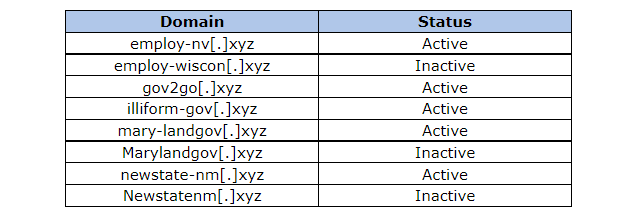Contents:
A warning comes from the FBI announcing that cybercriminals use new methods to collect financial data and personal information, making use of false websites posing as government platforms. Their goal is to make the victims provide sensitive data, propagate malware, and moreover, they also demand unemployment benefits on the users’ behalf.
The False Government Websites: Detailing the Issue
The Federal Bureau of Investigation published on the 15th of October on the website of Internet Crime Complaint Center an announcement where the issue was detailed.
According to them, the resemblance of malicious websites with real government platforms is very much alike, so one would not notice the difference. The victims are convinced to share personal data and financial info.
These spoofed websites imitate the appearance of and can be easily mistaken for legitimate websites offering unemployment benefits. The fake websites prompt victims to enter sensitive personal and financial information. Cyber actors use this information to redirect unemployment benefits, harvest user credentials, collect personally identifiable information, and infect victim’s devices with malware. In addition to a loss of benefits, victims of this activity can suffer a range of additional consequences, including ransomware infection and identity theft.
How Many Domains Were Identified?
The same announcement from the FBI also states how many domains were engaged in this type of data theft, more specifically 385 domains. Out of these, eight of them pose as government pages that are associated with official platforms on unemployment benefits.

Identity Theft Off the Hour
The information targeted and stolen on these websites can lead to identity theft.
According to BleepingComputer, FTC (the US Federal Trade Commission) declared in February 2021 an increase in identity theft reports. Unlike 2019, the year 2020 recorded a double number of identity theft cases: so, in one year no less than 1.4 million reports. Besides, the same organization got 394,280 reports associated with fraud attempts in the matter of government benefits. The numbers are bigger than 2019, taking into account that 2019 registered 12,900 such cases.
As many people were left unemployed because of the pandemic, the governments took some measures and expanded unemployment benefits, thus leading to the increase in identity theft performed by cybercriminals.
2020’s biggest surge in identity theft reports to the FTC related to the nationwide dip in employment. After the government expanded unemployment benefits to people left jobless by the pandemic, cybercriminals filed unemployment claims using other people’s personal information.
How to Protect Yourself from Identity Theft?
In the same announcement, the FBI also shared some tips on how to protect yourself against identity theft. Out of them, we can mention a few:
- The spelling of the web addresses should be checked in terms of limitations identification;
- Ensure that the website you navigate on owns an SSL certificate.
- Software updates are a must;
- Two-factor authentication should be used;
- Stay away from phishing e-mails.
If such a malicious website is discovered, the FBI advises to immediately announce your local FBI office (www.fbi.gov/contact-us/field-offices) or to report the activity at www.ic3.gov.
Did you enjoy this article? Follow us on LinkedIn, Twitter, Facebook, Youtube, or Instagram to keep up to date with everything we post!


 Network Security
Network Security
 Vulnerability Management
Vulnerability Management
 Privileged Access Management
Privileged Access Management
 Endpoint Security
Endpoint Security
 Threat Hunting
Threat Hunting
 Unified Endpoint Management
Unified Endpoint Management
 Email & Collaboration Security
Email & Collaboration Security










